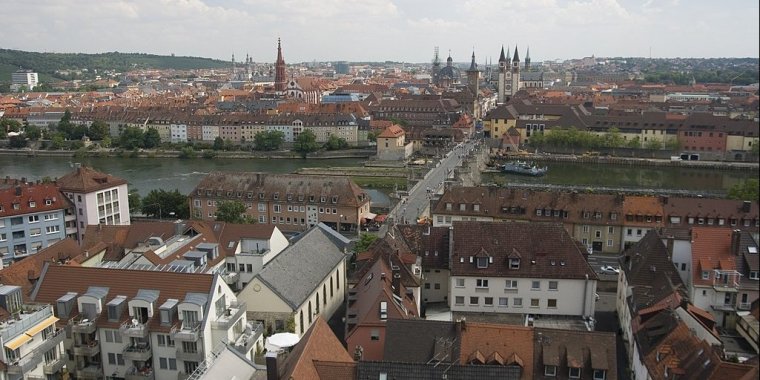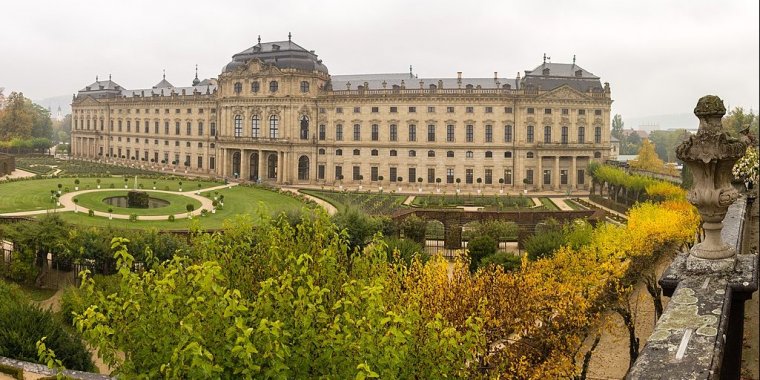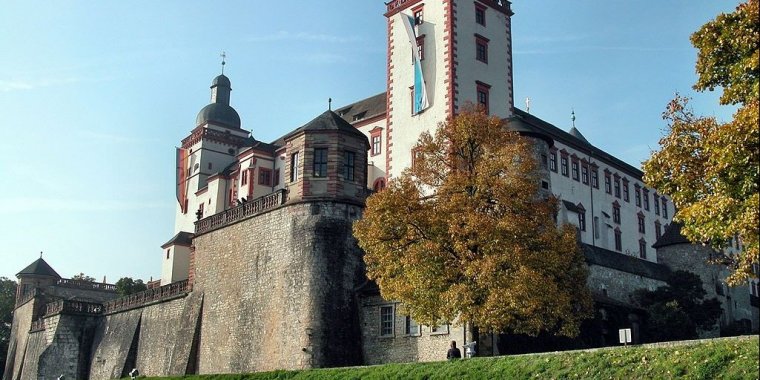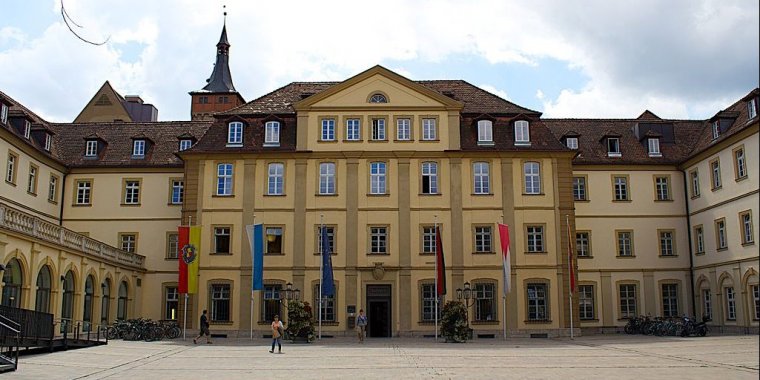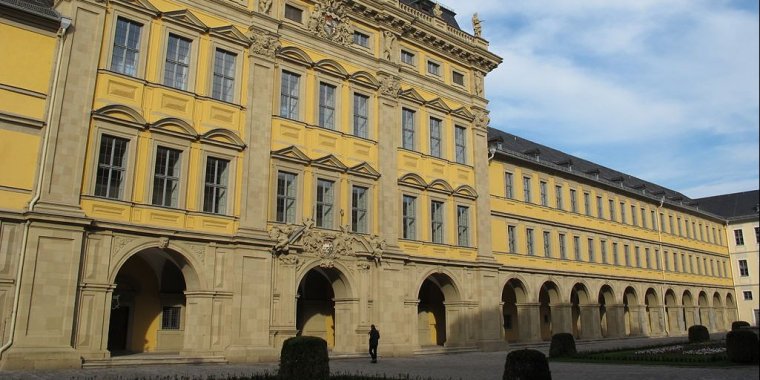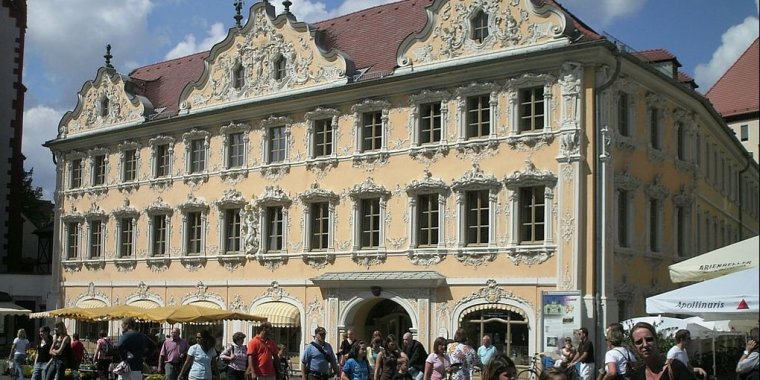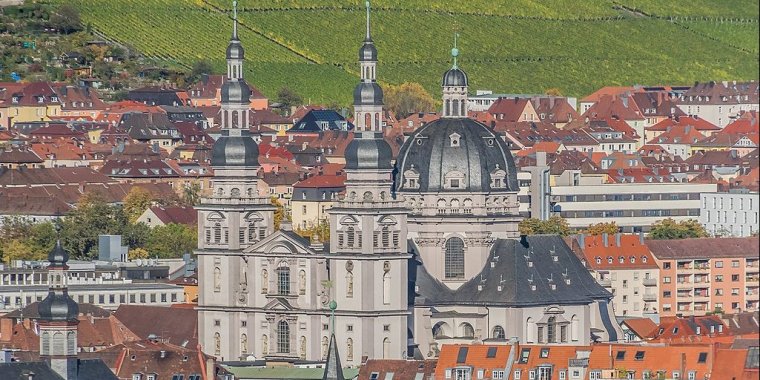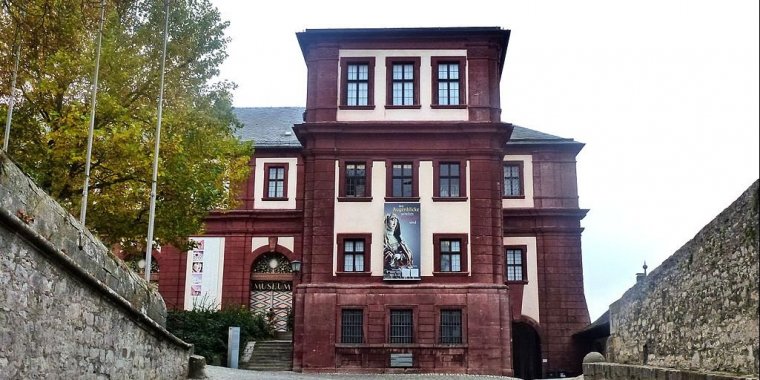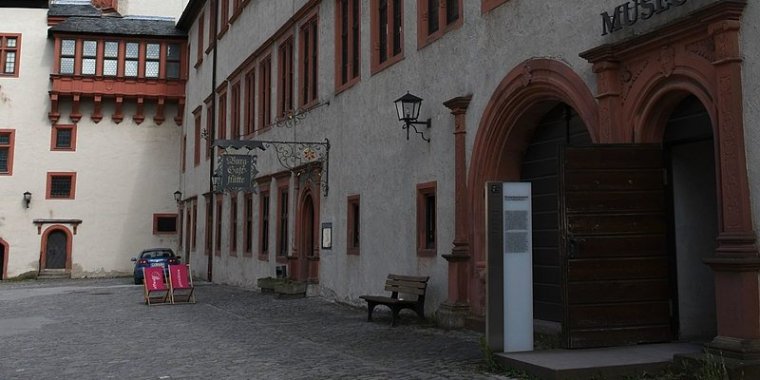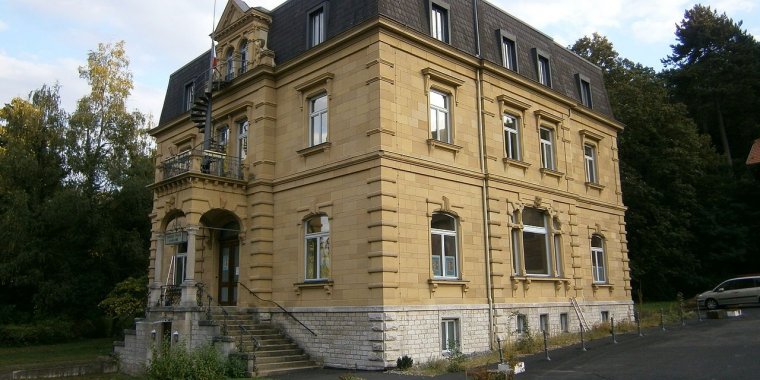| Published in Attractions / Places of Interest |
Tourist Attractions in Würzburg, Germany
• Würzburger Residence, Residenzplatz 2. 9am - 6 pm Summer 10am-4.30pm winter. one of the finest Palaces in Europe and is famed for its magnificent staircase. It is regarded as one of the finest pieces of Baroque art in the world as such it has been inscribed on the UNESCO World Heritage List. The building was designed by Balthasar Neuman, and the Fresco above the Staircase was painted by Tiepolo, it is reputed to be the largest in the world. The palace has 300 rooms, spread over 3 wings. There is also a Chapel decorated by Tiepolo which is free to enter and well worth a visit Entrance is €6.50.
• Würzburger Residence gardens (situated behind the Palace). free to enter.
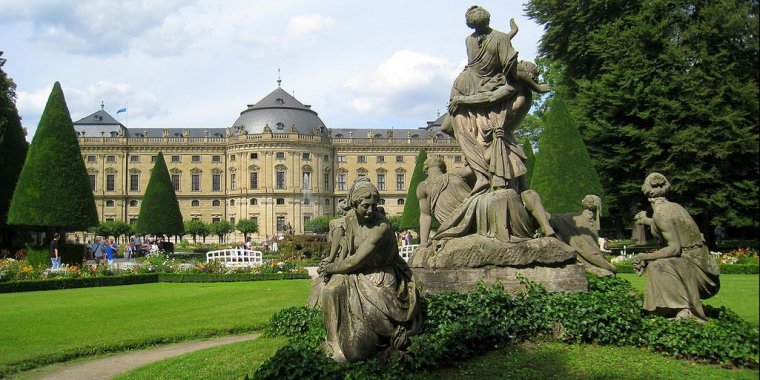
Court Gardens with the Abduction of Proserpina in the front. ![]()
• Festung Marienberg (Marienberg Fortress and Princes' Building). Enjoy the beautiful view over the city and the Main from the fortress' walls which are open freely to the public. The castle's pay-admission museum is a somewhat confusing experience to foreign visitors and could be avoided as it is almost entirely in German. No English language guiding is available. Also note that most of the Marienberg's once very rare collections and interior were destroyed in a fire during the war. Today's interior and the present collections are a sad replacement.
• Alte Mainbrücke (Old Main Bridge) was built 1473–1543 to replace the destroyed Romanesque bridge dated from 1133. In two phases, beginning in 1730, the bridge was adorned with twelve 4.5 meter statues of saints and historically important figures like John of Nepomuk, Mary and Saint Joseph, Charlemagne and Pepin the Short. The bridge was damaged by explosives in the final days of World War II. US troops threw the original Pepin into the river to make way for an anti-aircraft gun:32
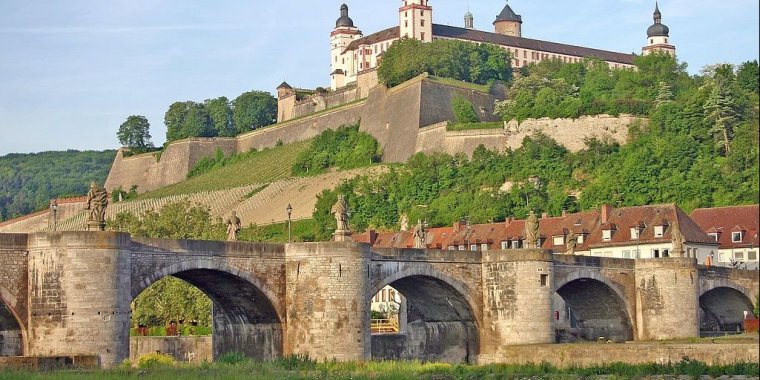
Marienberg and the Old Bridge. ![]()
• The Rathaus or city hall of Würzburg differs from those of most Imperial Cities in that it was not a sumptuous edifice purpose-built in Renaissance style. Rather, the motley collection of buildings and wings reflects the fact that after 1400 the city was permanently under the control of the bishop who did not allow a representative new building. The Rathaus consists of parts dating from 1339 (chapel), 1453 (tower with the town's first public clock), 1544 (southwest oriel), 1659/60 (Roter Bau). In 1822 the three-winged structure of the neighbouring Karmeliterkloster (monastery of the Carmelites) was added to the city hall. The "Renaissance" row on Karmeliterstrasse was built only in 1898.
• Among Würzburg's many notable churches are the Käppele, a small Baroque/Rococo chapel by Balthasar Neumann, perched on a hill facing the fortress, and the Dom (Würzburg Cathedral). The Baroque Schönbornkapelle, a side-chapel of the cathedral, has interior decoration of (artificial) human bones and skulls. Also in the cathedral are two of Tilman Riemenschneider's most famous works, the tomb stones of Rudolf II von Scherenberg (1466–1495) and Lorenz von Bibra (1495–1519). At the entrance to the Marienkapelle (on the market square) stand replicas of the statues of Adam and Eve by Riemenschneider.
The Neumünster is a Romanesque minster church with a Baroque façade and dome. Its crypt (Kiliansgruft) houses the relics of Kilian, Totnan and Kolonat. There are also two stone sarcophagi from the 8th century, the tombs of the first and second Bishop of Würzburg, Burkard and Megingaud. The latter's tomb features the oldest post-Roman monumental inscription in Franconia.
Next to the Neumünster is the Lusamgärtchen. It contains a memorial from 1930 to Walther von der Vogelweide, who very likely was buried here in 1230. Only the church remains of the town's oldest abbey, St Burchard's Abbey founded around 750. It was transformed into a collegiate church in 1464 and dissolved in 1803. Among the Baroque churches in the centre of the city are Stift Haug, St. Michael, St. Stephan and St. Peter.
• The Juliusspital is a Baroque hospital with a courtyard and a church originally established by prince-bishop Julius Echter in 1576. The 160 m long northern wing was added by Italian architect Antonio Petrini in 1700-4. Beneath it lies the similarly-sized wine cellar, which (together with those of the Würzburg Residence and the Bürgerspital) offers a chance to taste the local Frankenwein in a special environment. The Juliusspital is the second largest winery in Germany, growing wine on 1.68 square kilometres (1 square mile).
• The Haus zum Falken on Marktplatz, next to the Marienkapelle, with its ornate stucco façade, is an achievement of the Würzburg Rococo period. In the past it served as an inn and a public library. Today, it houses the tourist information office.
• The Stift Haug (formally the Stiftskirche St. Johannis im Haug, dedicated to John the Baptist and John the Evangelist) was built in the years 1670–1691 as the first Baroque church in Franconia. It was designed by Antonio Petrini. The former church had been demolished as it was in the way of new city fortifications built by Johann Philipp von Schönborn. In 1945 most of the church's interior was destroyed. Works of art include a crucifixion by Tintoretto loaned by the Bavarian State Painting Collections.
• The Würzburger Stein vineyard just outside the city is one of Germany's oldest and largest vineyards.
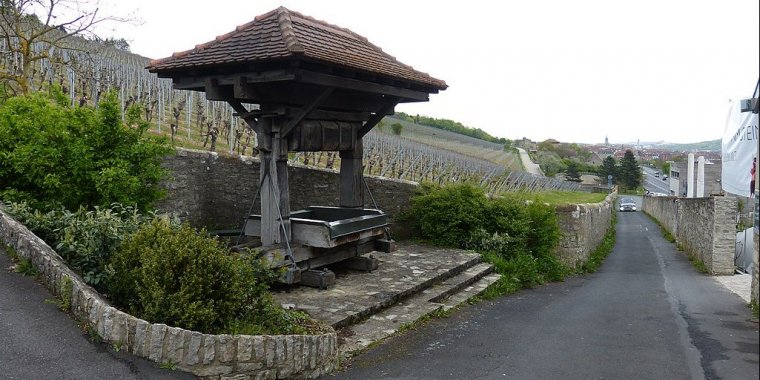
Weinpresse am Würzburger Stein. ![]()
• The Museum für Franken (formerly the Mainfränkisches Museum) in the fortress is home to the world's largest collection of works by Tilman Riemenschneider. In a space of 5,400 m2 (58,125 sq ft), art by regional artists is exhibited. Exhibitions include a pre-historic collection, artifacts of the Franconian wine culture and an anthropological collection with traditional costumes.
• Fürstenbaumuseum: Also in the fortress, the restored Fürstenbau (former residence of the prince-bishops) houses not only the renovated living quarters, but also an exhibit on the history of Würzburg. Another exhibit features ecclesial gold jewelry and a collection of liturgical vestments. The museum also displays two models of the city: Würzburg in 1525 and Würzburg in 1945.
• Museum im Kulturspeicher, housed in a historic grain storage building combined with modern architecture, has more than 3,500 m² of exhibit space. Collections include the "Peter C. Ruppert Collection", with European Concrete art after 1945 from artists such as Max Bill and Victor Vasarely; works from the Age of Romanticism, the Biedermeier period, Impressionism, Expressionism as well as contemporary art.
• Museum am Dom (Museum at the Cathedral), opened in 2003. It features about 700 pieces of art spanning the past 1000 years. The 1,800 m² exhibit contrasts contemporary art with older works.
• Shalom Europe, a Jewish museum. Built around 1,504 tombstones discovered and excavated in the old city, the museum uses modern information technology to portray present and traditional Jewish lifestyles and their survival over the past 900 years in Würzburg.
• Martin von Wagner Museum, with objects from ancient Egypt, Greece, and Rome. It is housed in the south wing of the Residence and displays ancient marble statues and burial objects. There are also ten exhibition halls with art from the 14th to the 19th centuries.
• Siebold-Museum, which houses permanent and temporary exhibits, including the estate of the 19th-century local physician and Japan researcher Philipp Franz von Siebold.
• The Röntgen Memorial Site in Würzburg, Germany is dedicated to the work of the German physicist Wilhelm Conrad Röntgen (1845–1923) and his discovery of X-rays, for which he was granted the Nobel Prize in physics. It contains an exhibition of historical instruments, machines and documents. (Wikivoyage, Wikipedia)
See also Würzburg in Pictures.
YOU MAY ALSO LIKE

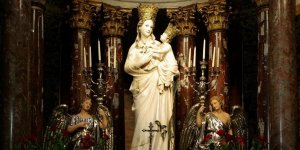



 If you own or manage a travel-related business such as a hotel, a bed-and-breakfast, a restaurant, a pub or a cafeteria, you can create a web page for your business for free on Titi Tudorancea Travel Info. » |
